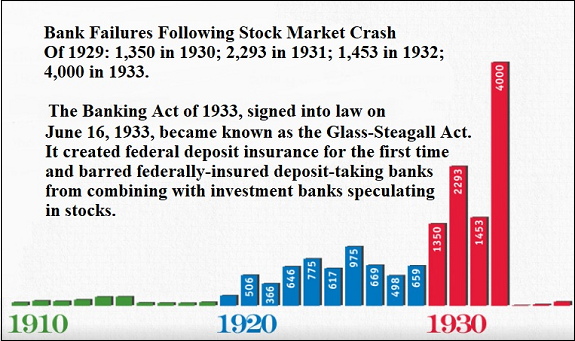Courtesy of Pam Martens
By Pam Martens and Russ Martens: October 11, 2021 ~
Regulation U is a 1936 Federal Reserve rule, that is still in force today, that allows federally-insured, taxpayer backstopped commercial banks to make margin loans for speculating in stocks. Unlike 1936, however, Wall Street trading houses are today allowed to own their own federally-insured, taxpayer backstopped commercial banks. That has allowed a lot of mischief to occur in the making of margin loans for speculating in the stock market. We’ll get to the details of all that in a few moments, but first some necessary background.
Following the 1929 stock market crash, 9,096 banks that were holding deposits for average Americans failed as a result of insolvency between 1930 and 1933. (See chart above.)
The 1930s banking crisis came to a head on March 6, 1933, just one day after President Franklin D. Roosevelt was inaugurated. Following a month-long run on the banks, Roosevelt declared a nationwide banking holiday that closed all banks in the United States. On March 9, 1933, Congress passed the Emergency Banking Act which allowed regulators to evaluate each bank before it was permitted to reopen. Thousands of banks were deemed insolvent and permanently closed.
There was no federal deposit insurance on bank deposits at that time, meaning that depositors lost all of their money in many cases or were paid just pennies on the dollar.
…




